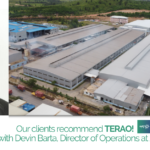Natural daylighting is a design strategy that aims to maximize the use of natural light in buildings while minimizing the need for artificial lighting and cooling. It can enhance the comfort, health, and productivity of the occupants, as well as reduce the energy consumption and environmental impact of the building. It can also reduce the need for artificial lighting and lower energy consumption and carbon emissions.
However, natural daylighting also poses some challenges, such as excessive heat gains and glare, which can affect thermal comfort and visual performance. Therefore, it is important to design buildings that optimize natural daylighting while minimizing its negative impacts.

KEY CONCEPTS OF NATURAL DAYLIGHTING
One of the main concepts of natural daylighting is daylight factor (DF), which is the ratio of indoor illuminance to outdoor illuminance. It indicates how much natural light is available in a given space, and how evenly it is distributed. A higher daylight factor means more natural light and less need for artificial lighting.
However, it also means more potential for heat gains and glare, which can compromise the thermal and visual comfort of the occupants. Therefore, a balance between the daylight factor and solar heat gain coefficient (SHGC), which measures how much solar radiation is transmitted through a window, is essential for achieving optimal daylighting.

Source: Wikipedia
Another concept is daylight autonomy (DA), which is the percentage of time during which a space can meet a target illuminance level with natural light only. It depends on factors such as orientation, window size and shape, shading devices, interior layout and reflectance, and climate. A higher daylight autonomy means more energy savings and less carbon emissions from artificial lighting. However, it also requires careful control of glare and overheating, especially in sunny climates.
STRATEGIES TO OPTIMIZE NATURAL DAYLIGHTING
Natural daylighting also poses some challenges that need to be addressed by careful design and analysis. It can increase heat gains in buildings by allowing solar radiation to enter through fenestration and shading elements. Heat gains can affect thermal comfort and energy consumption by increasing the demand for cooling and ventilation systems.
The other factor is glare, glare is the sensation of discomfort or impairment caused by excessive or uncontrolled brightness in a field of view. Glare can affect visual comfort and performance by reducing visibility, clarity, and concentration. Glare can be caused by direct sunlight, reflected sunlight, or bright sky patches entering through fenestration or shading elements.

To optimize natural daylighting while minimizing heat gains and glare, several strategies can be applied. Some of these strategies are:
– Using appropriate window size and orientation: Windows should be sized and oriented according to the solar path and the desired daylight distribution. For example, south-facing windows can provide more consistent daylight throughout the year, while north-facing windows can provide more diffuse daylight with less heat gains and glare. East- and west-facing windows can provide more dynamic daylight with changing colors and shadows, but they can also cause more heat gains and glare in the morning and afternoon.

– Using shading devices: Shading devices can block or filter unwanted solar radiation and reduce heat gains and glare. They can be fixed or movable, internal or external, opaque or translucent. For example, fixed external louvers can provide effective shading for south-facing windows, while movable internal blinds can provide flexible shading for east- and west-facing windows. Translucent shades can diffuse daylight and create a soft glow in the space.

– Using daylight redirection systems: Daylight redirection systems can redirect or reflect natural light deeper into the space and increase the DF and DA. They can be passive or active, horizontal or vertical, specular or diffuse. For example, passive horizontal light shelves can redirect daylight from high windows to the ceiling and walls, while active vertical prismatic films can redirect daylight from low windows to the floor and walls. Specular reflectors can create focused beams of daylight, while diffuse reflectors can create uniform washes of daylight.

– Using daylight controls: Daylight controls can adjust artificial lighting levels according to the available natural light and reduce energy consumption and visual discomfort. They can be manual or automatic, local or centralized, dimming or switching. For example, manual local dimming controls can allow users to adjust the brightness of individual luminaires according to their preferences, while automatic centralized switching controls can turn off groups of luminaires when sufficient daylight is available.

Conclusion
Optimizing natural daylighting while minimizing heat gains and glare is a complex yet essential aspect of sustainable building design. Through a combination of thoughtful architectural design, advanced glazing technologies, and strategic shading solutions, it is possible to harness the benefits of natural daylight while ensuring a comfortable and energy-efficient indoor environment.
TERAO is a Building Sustainability Engineering Consultancy that can provide you with support in balancing between natural daylighting, comfort, and energy efficiency.
Explore more:
- Optimizing buildings with CFD
- Energy modeling tool
- How to face more frequent heat waves_part 1
- How to face more frequent heat waves_part 2
We hope you find this expertise article insightful and valuable. If you have any questions or would like to learn more, please do not hesitate to contact our Business Development Director Gaspard at glemoinescelles@teraoasia.com. We are committed to helping our clients achieve their sustainability goals and would be pleased to accompany you on this journey toward a more sustainable future.


![[Expertise] How to conduct an energy audit to identify areas of energy waste in business](https://teraoasia.com/wp-content/uploads/2024/06/Expertise-1-150x150.jpg)

Leave A Comment